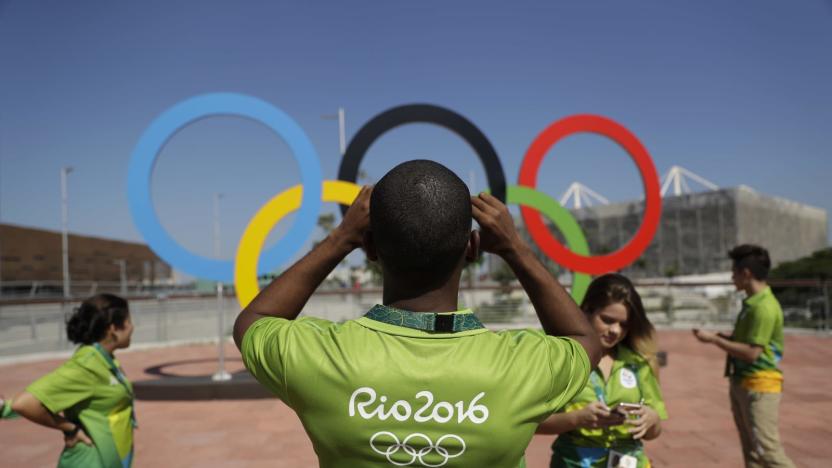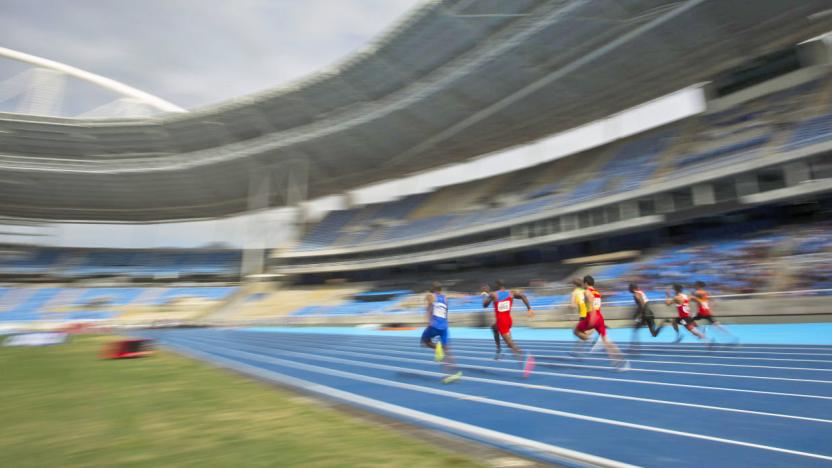2016Olympics
Latest

Nike used 3D printing and Olympic sprinters to design its new track shoe
When Shelly-Ann Fraser-Pryce competes in the women's 100m and 4x100m relay at the Olympics this month, she'll do so wearing what Nike claims is one of its most advanced track and field shoes yet. The 29-year-old Jamaican, who is favored for gold in Rio, actually helped Nike design her new spikes, the Zoom Superfly Elite. In the years leading up to the 2016 summer games, she worked with Nike's Sport Research Lab to figure out the ideal performance for a sprinter silhouette. Among other experiments, she test-3D-printed prototypes of the spikes, which were tailor-made based on captured data that measured her speed on the track and, most importantly, off the blocks.

How to watch the 2016 Rio Olympics
The summer Olympics are just a few days away, and whether or not you're a sports fan, chances are you'll want to keep up with everything that happens in Rio de Janeiro. Thankfully, you'll have many options to watch this year's games. But before we tell you how to tune in, you should know the event officially kicks off on August 5th, but certain competitions begin earlier. For instance, soccer (aka football) has games on August 3rd, starting with the women's match between Sweden and South Africa. There's also going to be gymnastics training that day. Whatever your favorite sport may be, NBCUniversal is going to have those of you in the U.S. covered -- even in virtual reality.

Wearable tech will be everywhere at this year's Olympics
It's almost time. The 2016 summer Olympics are less than a week away, with the opening ceremony scheduled for August 5th. This year's event, which runs through August 21nd, takes place in Rio de Janeiro, Brazil, where the organizers have reportedly struggled to prepare for the games. Whether Rio is ready or not, some of the world's best athletes will be there to compete for gold medals in just a few days. Naturally, technology will have a presence at the Olympics. That includes wearables designed to make life easier and safer for Olympians as well as others supposed to help in training. Read on in the gallery below to learn about eight different pieces of gear the athletes will be using.

NBC will air the 2016 Rio Olympics in 4K, HDR and Atmos
NBC has announced that it will make content from this year's Olympic Games available to carriers in 4K and HDR, however there's one little catch. In a setup that will seem familiar for early HDTV adopters who still can't get Sony's "we brought chips... and salsa!" ad out of their heads 12 years later*, 4K UHD footage of the Opening and Closing Ceremonies, swimming, track and field, basketball, the men's soccer final, and judo is coming home on 24 hour tape delay. NBC will provide a downconverted version of the 8K feed Olympic Broadcasting Services and Japan's NHK are experimenting with, to 4K, and present it in HDR with Dolby Atmos surround sound audio. According to NBC Sports president Gary Zenkel, "The Olympics have been a consistent driver of technological advancements, and Rio will be no different."

Brazilian police live out Robocop fantasies, test glasses that scan for criminals
In advance of the 2016 Olympics 2014 World Cup (and the thousands of visitors it'll draw), military police in São Paulo and Rio de Janeiro are testing glasses topped with cameras capable of scanning crowds for criminals. The camera analyzes 46,000 biometric points on up to 400 faces per second -- data that then gets compared with a database of up to 13 million people. If a mug happens to match a wanted person or known troublemaker, a red light will appear on a small screen connected to the glasses. And, in a twist particularly befitting Robocop, the glasses can purportedly be calibrated to zoom in from 12 miles away, though they'll typically be used to manage crowds at a much more personal 50 meters (164 feet). For now, local cops will use them to tame crowds (and likely brawls) at soccer matches and even concerts, but hope to eventually monitor those crowded World Cup stands. As for us, we're all kinds of curious. Where do those tens of millions of faces come from -- Santa's naughty and nice list? What if people wear masks? Or sunglasses at night?


